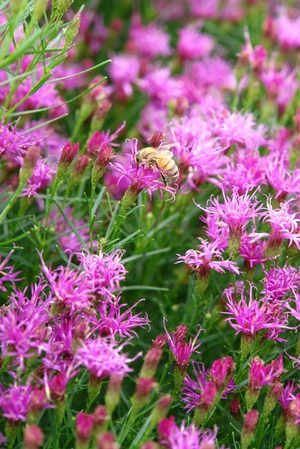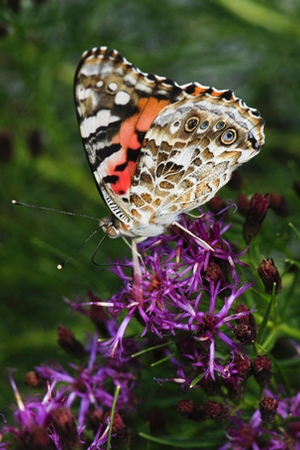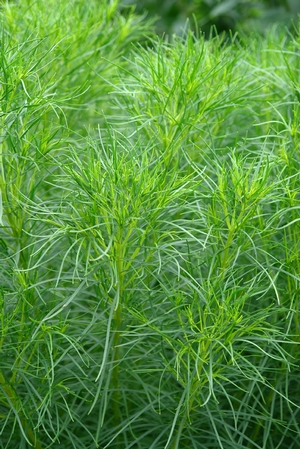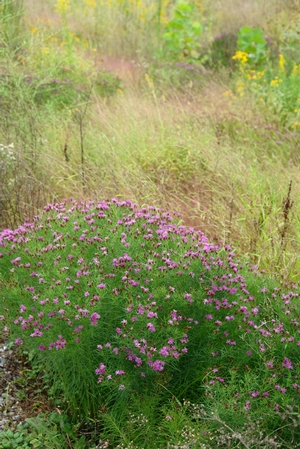Vernonia lettermannii 'Iron Butterfly'
Common: ironweedVernonia lettermannii 'Iron Butterfly' LP50 - 50 per flat
- Height: 30"-36"
- Spread: 30"-36"
- Spacing: 18"-24"
- Hardiness Zone(s): 4-9


Vernonia lettermannii 'Iron Butterfly' LP50 - 50 per flat



This selection of the Arkansas native comes to us from Dr. Allan Armitage's trials at the University of Georgia. It has lovely fine foliage like Amsonia hubrichtii and is a compact, well-branched and vigorous plant. In late summer it is covered with true purple flowers that attract plenty of butterflies. Found in rocky flood plains, Vernonia lettermannii is very tolerant of hot, dry locations, yet can withstand brief periods of inundation.
Grow Vernonia lettermannii in full sun and average to dry soils with good drainage. Periods of inundation are tolerated, but not heavy or saturated soils.
Vernonia lettermannii ‘Iron Butterfly’ is a selection of the Arkansas native coming to us from Dr. Allan Armitage's trials at the University of Georgia. It has lovely fine foliage like Amsonia hubrichtii and is a compact, well-branched and vigorous plant. In late summer, ‘Iron Butterfly’ is dramatically covered with true purple flowers that attract plenty of butterflies. The foliage stays attractively globular and even maintains a strong presence in the winter, providing lovely winter interest.
Vernonia lettermannii grows mainly on gravel bars and in the cracks of rocks in the drainage area of the Ouchita River in Arkansas. Vernonia lettermannii is very tolerant of hot dry locations, yet can withstand brief periods of inundation. Grow in full sun and average to dry soils with good drainage. While periods of inundation are tolerated, heavy or saturated soils stress the plant. It is in our experience that Vernonia lettermannii ‘Iron Butterfly’ does hybridize with other Vernonia in the area and can lead to mixed seedlings with varying foliage textures and plant heights.
Performing beautifully in bioswales, pollinator gardens, perennial borders, and natural areas, we can’t seem to get enough of ‘Iron Butterfly’. The flowers attract a plethora of butterflies, skippers, moths, and native bees and occasionally, a hummingbird. The foliage is avoided by deer and other herbivorous mammals.
"George W. Letterman, aged 72, a recluse and botanist, died in poverty and attended only by a neighbor in his little cabin at Allenton, thirty miles west of St. Louis, last night. Throughout his long stay in Allenton the botanist lived alone in his one-room cabin, spending most of his time in the woods in search of rare plants and trees. Many distinguished American and European scientists made pilgrimages to his cabin and went on excursions with him through his beloved woods along the Meramec. Many rare plants which he discovered were named after him. Harvard professorships twice were offered to Mr. Letterman, but he waved them aside as temptations, preferring the woods to halls of learning." Some of the genera containing species named for him are Vernonia, Poa, Stipa, and Crataegus. It does not appear that he ever published anything." Torreya (Vol. 13, p. 170)